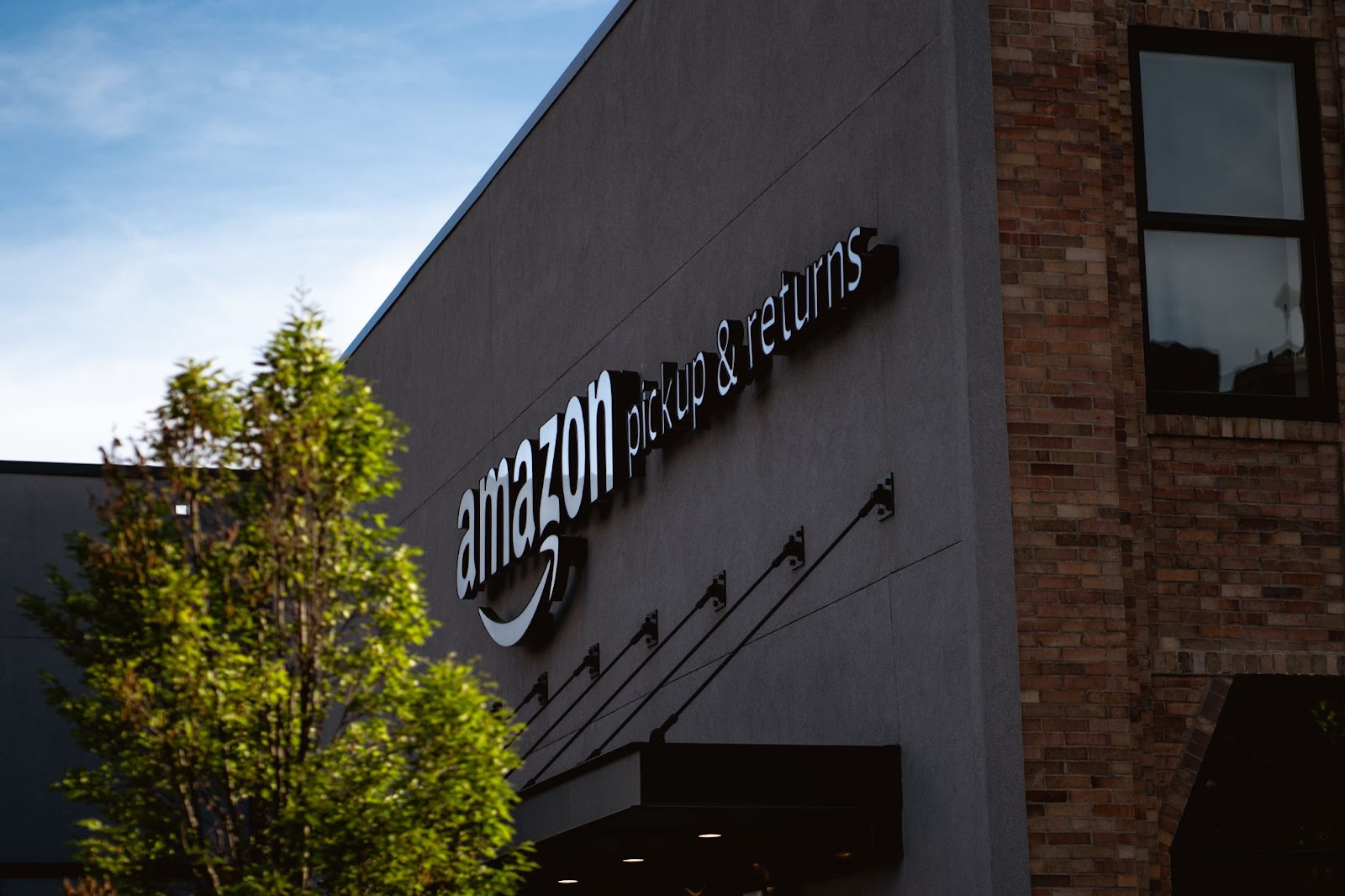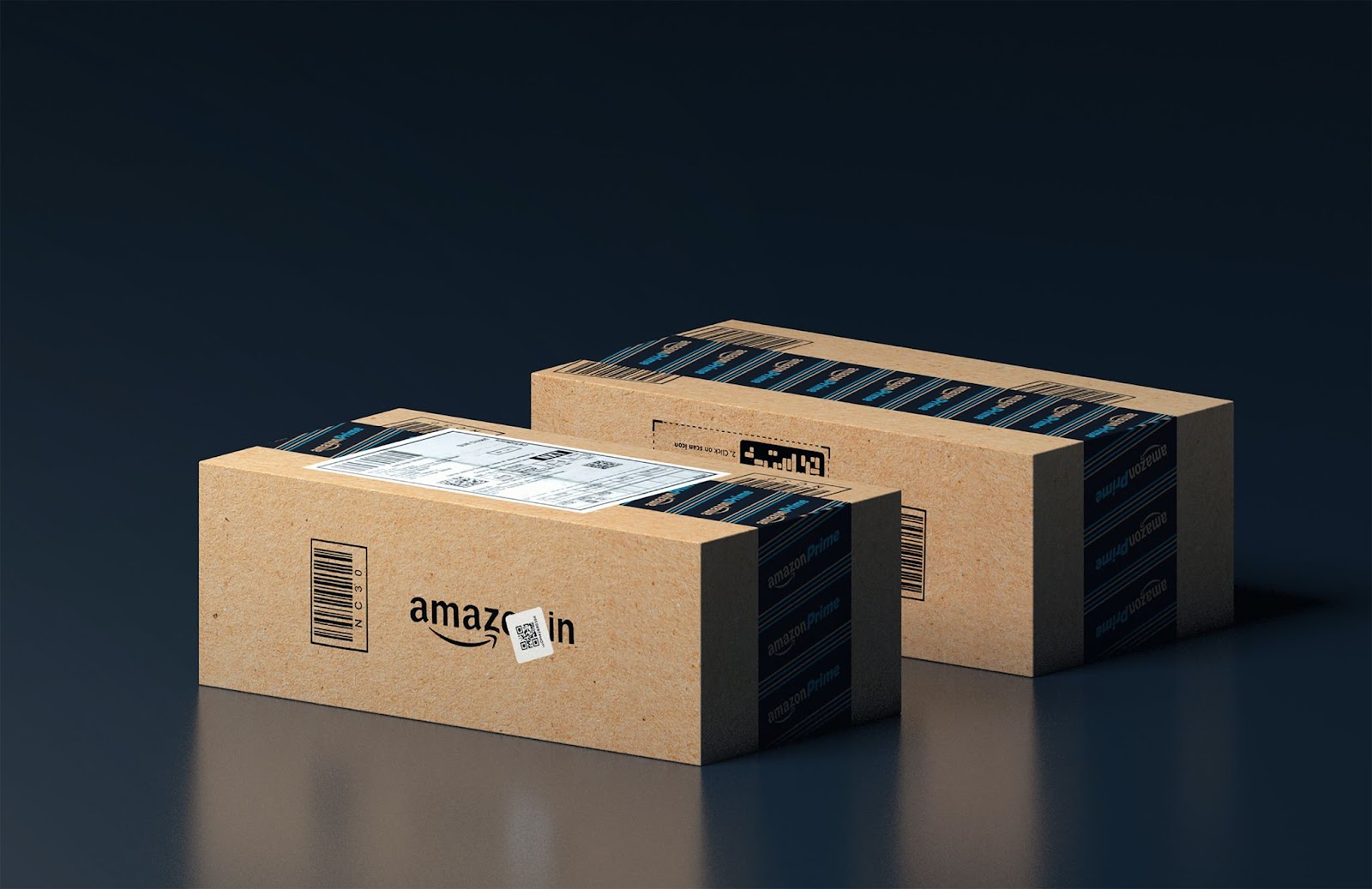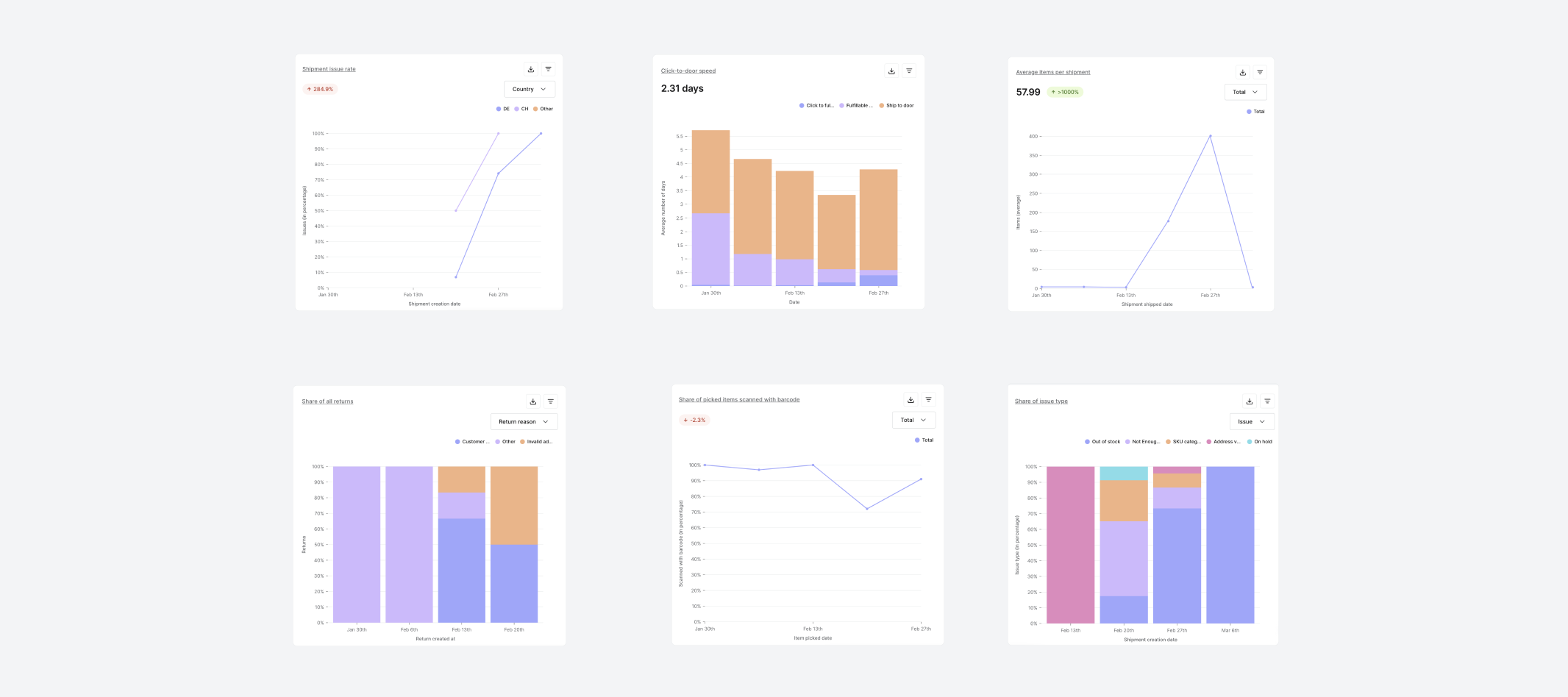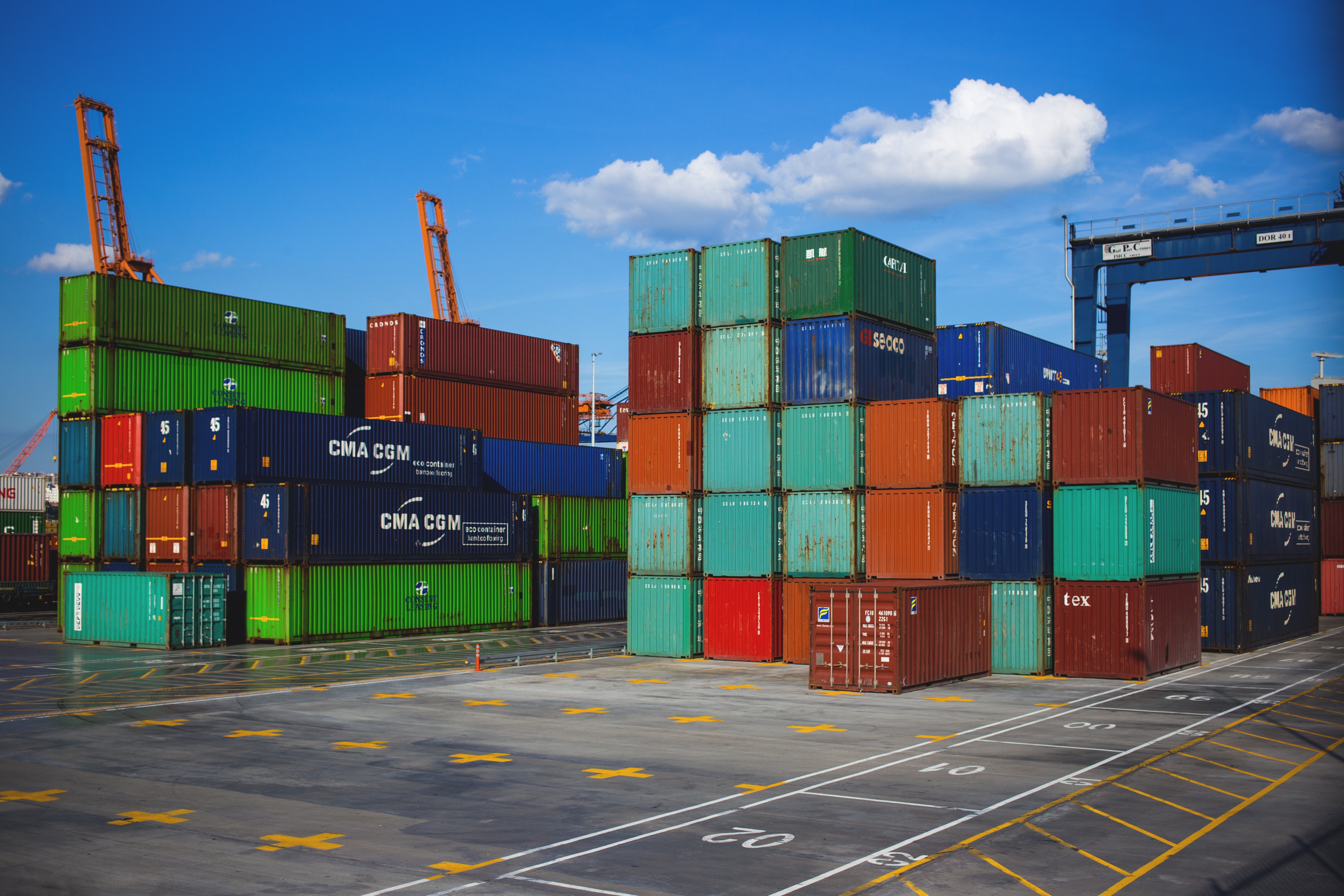Amazon FBA vs. FBM: what is the difference?
Learn the what Amazon FBA and FBM means and the key differences between the two. Find out if FBA or FBM is the right option for your business.
.png)
If you work in e-commerce, the acronyms FBA and FBM might sound familiar, but it might not be totally clear what they mean. Find out here the definitions of Amazon FBA and FBM, as well as the advantages and disadvantages of outsourcing your logistics to one of these two options.
What is Amazon FBA?
The Amazon FBA (Fulfillment By Amazon) program allows you to store all your inventory in Amazon warehouses and let their logistics service handle shipments, returns, and customer service.
The prospect of minimizing logistical hassle and just focusing on selling is inviting to many e-commerce sellers, but the practical convenience has repercussions on both the costs you incur over time and the control of your merchandise.
Let's start by talking about actual costs.
How much does Amazon FBA cost?
FBA storage costs
To use the FBA program all your inventory must be stored at an Amazon warehouse. Your costs then depend on the volume of your stock (how much space it takes up on the picking shelves) and the type of merchandise.
There are also additional costs for items stored at a logistics center for more than 331 days.
Therefore, although the FBA program cuts some logistical hassle for you as a seller, you will have to consider the logistics challenges arising from managing your inventory at their warehouses.
FBA management costs
In addition to warehousing storage costs, you will also have costs associated with handling your goods during shipping.
These costs are calculated based on predefined size and weight ranges for envelopes and packages. The standard ranges have been changed since March 31, 2022 to address inflation and rising gasoline costs, and the cost varies from country to country. See price changes for the UK market here.
For items outside the standard sizes, the price is calculated using the larger of the two units (weight and volumetric weight). Fortunately, Amazon provides a handy logistics cost calculator to estimate the fees related to your products.
There may be additional fees if inventory shipped to the logistics center does not meet packaging, labeling, and shipping requirements.

Benefits of Amazon FBA
There are many benefits to using Amazon FBA, here is an overview of them. You will find details on each below:
- Amazon Prime
- Buy Box
- Increased focus on sales
- Facilitated Search (SEO)
- Amazon Support
- A marketplace available worldwide
Amazon Prime: get the badge
All FBA products automatically get the Amazon Prime shipping badge, giving you a potential advantage over your competition. There are other ways to get the badge, but the FBA program is the fastest method.
Buy Box: enable immediate purchase
The Buy Box is the white box that appears to the right of the product description and allows customers to immediately put the product in their cart.
If the same product is sold by more than one seller, only one will get the buy box, and the other offers will be listed below as alternatives. Consequently, the seller who gets the buy box is the one with the highest probability of getting the sale.
The question then is, how is the buy box awarded?
First, there are requirements that the product and seller must meet in order to be considered eligible:
- Professional sales account
- ODR (total number of orders divided by the number of complaints) under 1 percent
- Prompt shipping
- Competitive pricing
- Account active for at least 90 days
- After that, an algorithm assigns the buy box to sellers who meet the requirements according to a rotation criterion.
Using Amazon FBA is not a requirement to win the buy box, but the rotation algorithm treats it as an added bonus, often giving priority for the buy box to sellers who use it.
It is important to keep this in mind in case your e-commerce deals with products around which there is a lot of competition.
Focus your time and energy on sales
Not having to worry about retail logistics frees your business from wasting time and resources that you can use for your marketing strategy and to acquire even more customers.
Facilitated search (SEO): improve your search rankings
Exactly as with the buy box, Amazon's search algorithm prefers products from sellers using Amazon FBA.
Just as with the buy box, this could be an important consideration if your online store operates with products with a lot of competition.
Save time with Amazon support
For those enrolled in the FBA program, Amazon not only handles the sale, but also handles returns and customer support, relieving your business of the burden of having a dedicated customer support team.
A marketplace with a worldwide presence
Amazon FBA operates globally. This allows sellers who want to expand their business overseas to open a new marketplace with greater ease and logistics costs that are often lower than if they were to build their own logistics network from scratch in another country.

Disadvantages of Amazon FBA
- It is not always cost-effective.
- Can lead to a loss in terms of vertical control and customization
- No possibility of quality control
- Organizing logistics to Amazon
Not always cost-effective
Depending on the type of product handled by the seller, Amazon FBA may not always be the most cost-effective logistics choice. This is especially true for products that are very bulky or have a slow turnover.
In this case, the seller should consider whether the benefits for buy box presence and facilitated search (combined with customer service) are worth the higher cost.
It can lead to a loss in terms of vertical control and personalization
In addition to marketing and sales, the process of shipping and receiving from the customer is one of the key aspects for any online store.
In this sense, Amazon certainly excels in terms of efficiency, but taking advantage of Amazon FBA means being part of a standardization that millions of other stores are part of.
It also means falling within certain packaging standards and alienating direct contact with its shoppers by making it difficult to build customer loyalty for recurring purchases.
No possibility of quality control
Once the inventory is sent to Amazon, control passes into their hands.
This means that no quality control can be performed on the goods before they are shipped to the individual customer.
Getting products to Amazon
FBA sellers must monitor their SKUs and arrange shipments to Amazon to ensure continuous stock presence.
This is very different from shipping to each individual customer, but it is still tied to a basic understanding of logistics management and one must deal with Amazon's strict packaging and labeling policies.
So what are the alternatives?

What is Amazon FBM?
Amazon FBM (Fulfillment By Merchant) is a sales mode that allows you to sell your products on Amazon while managing storage, shipping, and customer service yourself.
After all, why pay extra to Amazon if you already have a well-developed logistics network?
However, this mode has both advantages and disadvantages, and before making a final decision it is good to know both.
Advantages of Amazon FBM
- Lower costs
- SFP (Seller Fulfilled Prime)
- Greater vertical control
Lower costs
As we mentioned earlier, if you have a warehouse and logistics system already in place, not paying for Amazon storage and managing sales yourself is a good way to reduce costs.
SFP (Seller Fulfilled Prime)
Shipping independently does not mean having to give up Amazon Prime. FBM products can get an Amazon Prime badge just like FBA products, the only difference is that the transition is not automatic.
To get a Prime badge as an FBM seller, you will need to meet these criteria:
- Have a professional seller account
- Ensure that the couriers used are among those approved by Amazon.
- Have a rating of 4.5 or higher in the previous 30 days.
- Have performed a minimum of 30 Premium Shipping shipments (same-day or two-day delivery) in the 30 days prior to the request. However, there are additional criteria that must be met before Premium Shipping can be performed:
- Account must be older than 90 days.
- Orders must be tracked.
- The account must have tracked at least 94% of shipments, have delivered at least 96% of packages on time, and have an order cancellation rate of less than 1%.
- Have received a minimum of 10 orders in the previous 30 days.
- Free shipping on every product.
Greater vertical control
By having all your inventory in stock, you can freely dispose of your goods and arrange any quality control or other procedures you deem necessary before shipping.

Disadvantages of Amazon FBM
- Minor presence in the buy box
- No advantage on search results
- Responsibility for customer service and returns
Minor presence in the buy box
FBM products have to deal with the other side of the buy box, which favors sellers who use FBA.
Joining the SPF program will greatly help you have a better chance of getting the buy box, but, even with Prime, FBA will always have a narrow edge.
No advantage on search results
Exactly like the buy box algorithm, the search algorithm also favors FBA products.
This is a particularly heavy disadvantage in case of popular products, but impacts less in case your store deals with unique and niche products.
Customer service responsibility of returns
This is a disadvantage for those who already have a well-established logistics structure and would like to handle shipments themselves, but cannot follow up with all customers as they would like.
Differences between FBA and FBM
In summary, some features offered by Amazon FBA are unique, and characterize this service as opposed to the FBM method. As an example, the latter does not cover the additional costs of merchandise handling, a facilitated product search, and dedicated customer support, which in this case remain the seller's responsibility. The same applies to returns management.
In contrast, merchandise control is not covered in case you choose to rely on Amazon FBA.
Commonalities between FBA and FBM
FBA and FBM are two very different services, but ultimately they both allow you to list your goods on Amazon.
This allows all sellers on the platform to take advantage of the immense influx of buyers and benefit from the trust that the Amazon brand projects on potential customers.
FBA, FBM – what if the best solution is something else?
In this article we have tried to provide as complete a picture as possible to help you make a decision about which of these two programs might be the best fit for your business.But we would like to go one step further.
Both FBA and FBM require you to move on rigid tracks and sacrifice something. Depending on the type of goods you handle, you might get to a better compromise by having a partner outside of Amazon handle the logistics for you without charging exorbitant fees.
Hive can connect to your Amazon shop and handle every aspect of your D2C e-commerce logistics.
Interested? Get in touch with one of our experts and request a quote now.









.png)
.png)
.png)
.png)
.png)


.png)
.png)

.png)
.png)


